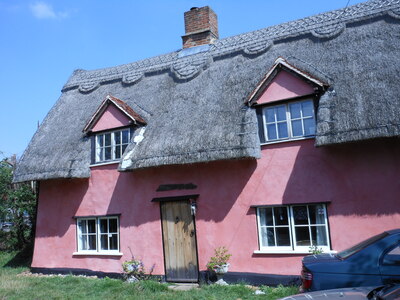A brief history of Sturmer
The history of most places starts with the evidence available to show when people inhabited them rather than any written records. Sturmer has a bronze age tumulus to the north, just by the Haverhill by-pass, which was probably used for a burial. Roman remains of coins and the signs of a villa have been found to the south.
Moving on we know of Leofsuna in the 10c who went from Sturmer to the battle of Maldon where the Saxons were defeated by the Vikings. Another famous man from Sturmer was William Hicks who was at the battle of Trafalgar and was rector here for more than 40 years.
The oldest building is the church but Linnetts, the thatched cottage at the southern end of the village is the oldest home built in the middle ages.
The village would have been mostly agricultural through the years with its own blacksmith etc. At the time of the Tythe map in 1842 most of the land was owned by John and Harry Purkiss.
The Sturmer Pippin apple was developed at the Dillistone nurseries in the village during Victorian times. The railway arrived in the 1860s and more houses were built and the farms changed hands.
The station closed in the 1960s and now most people rely on the car to take them to Haverhill and further afield for shopping, leisure activities and work. The village still has a pub and garden centre and the newest houses are nine houses at the Spinning Wheel site and a barn conversion in Water Lane.
